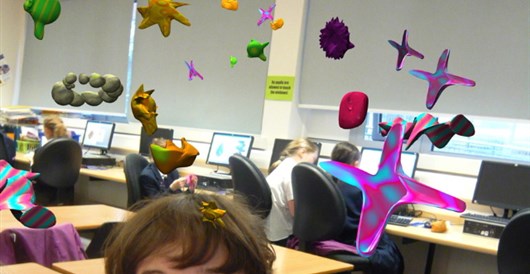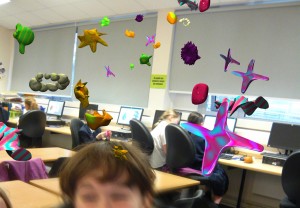About?
This project aims to explore new ways of describing our thoughts as things, things that (kind of) have a life of their own.
It asks us to think of thoughts as things that inhabit the spaces we share, responding to what is happening around them, acting partly under our control, partly for themselves. It uses augmented reality and physical computing to locate thoughts and feelings in social spaces, investigating how they might interact with people, their environment and each other.
Flunstellas is inspired by key ideas, such as decentralised and extended models of mind and mystical thought visualisations. It makes use of the behavior of living things and systems as a metaphor with which to explore parallel, distributed and decentralised thought processes.
It aims to explore new ways to describe our thought processes as complex systems populated by thoughts, and to investigate the effects that describing them in this way has on our sense of self and on our perceptions of other people.
This project makes use of a fantasy narative, featuring an unexplained thought visualisation phenomenon called Flunstellas, to frame the involvement of participants. This site is a behind the scenes platform for sharing how we invent Flunstellas, and how we use them to make artworks, run activities and design new technologies. It features guides for creating Flunstellas using high and lo-tech tools, style guides for sharing Flunstellas and information about the ideas that inform and inspire the project.
The website for the fantasy frame can be found at www.flunstellas.org

Aims
The Flunstellas project explores the use of technology to locate and animate thoughts and feelings as living things in public spaces. This is done to investigate the effects that describing our thoughts and feelings in this way has on our sense of self and on our perceptions of other people. The aim is not to predict, measure or synthesize human thought, but to create accessible new tools for the exploration of decentralised and extended perspectives of mind.
- Research and develop new computational tools to involve people in the creative exploration of decentralised models of thoughts and feelings.
- Educate people to make creative use of these new conceptual and computational tools
- Create new art experiences of exploring the visualisation of mind in public spaces and new models of participatory art.
- Develop a new communication practice featuring the collaborative construction and exchange of decentralised and locative models of thoughts and feelings.


